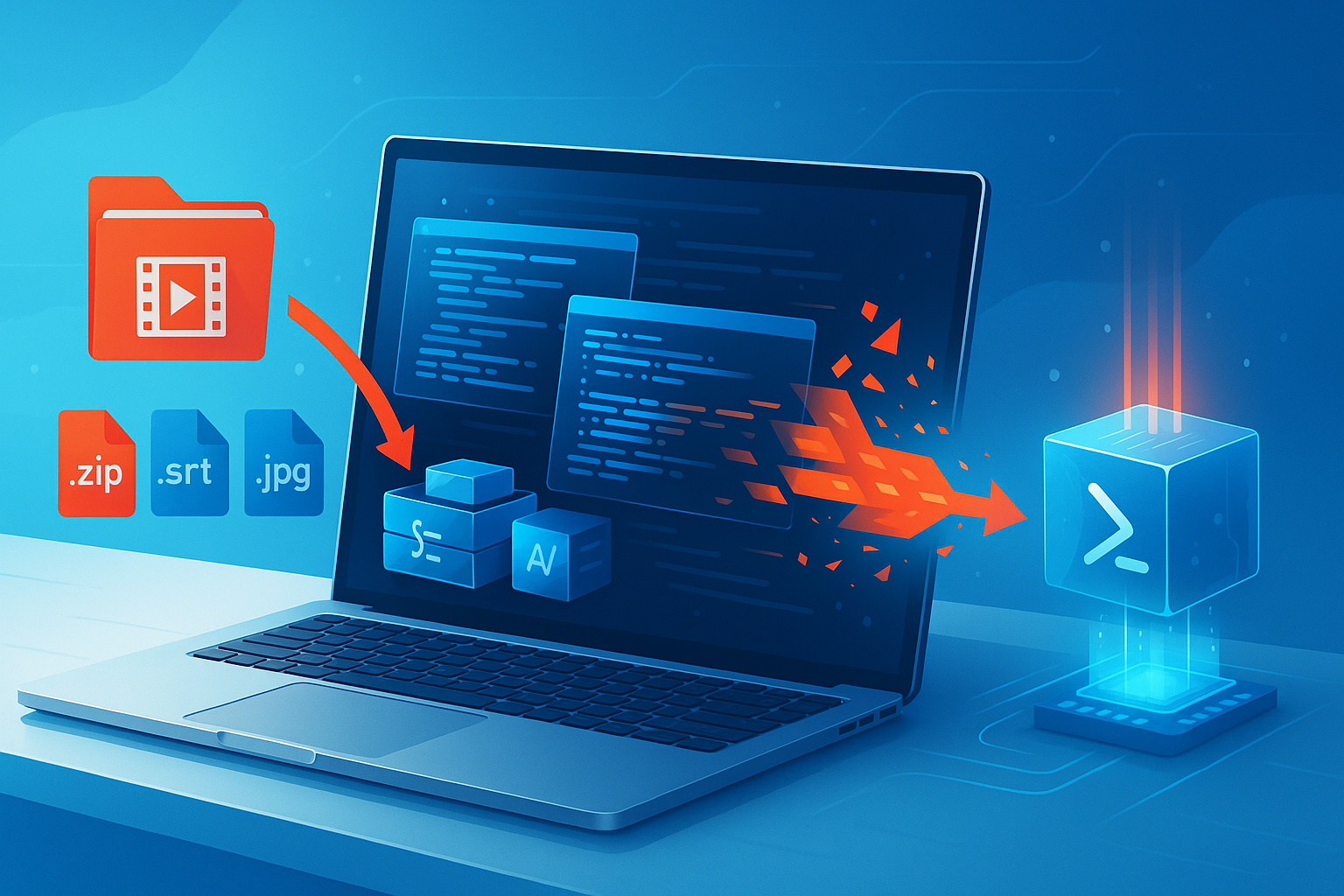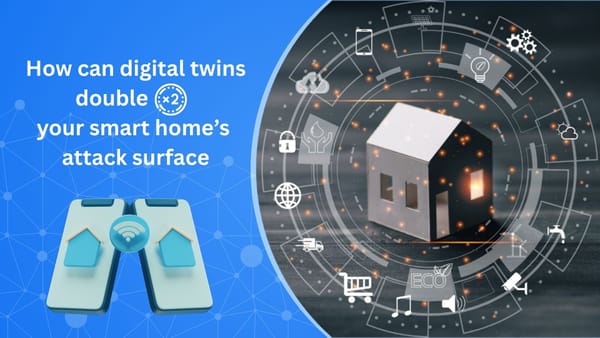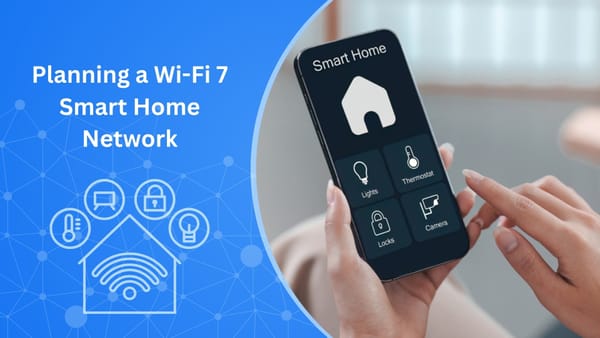Behind the Switch: Industrial IoT and Critical Infrastructure Security

Industrial IoT now powers things we rely on daily, such as water, power, transport, and healthcare, making its security a consumer issue, not just an engineering problem.
What IIoT means (and why you should care)
Industrial IoT, or IIoT for short, is the web of interconnected devices such as sensors, programmable controllers and machines that run factories and critical services. Think pumps at your local power plant, sensors in a substation, or monitoring systems in hospitals – devices kept online for easy monitoring, optimization and repair. NIST defines IIoT as networked sensors, instruments and devices that enhance industrial processes through internet connectivity.
These systems sit inside “critical infrastructure,” also known as the 16 sectors that keep daily life running, from energy and water treatment plants to healthcare, transportation and communications. When any of these assets are affected, the impact ripples straight through to the public.
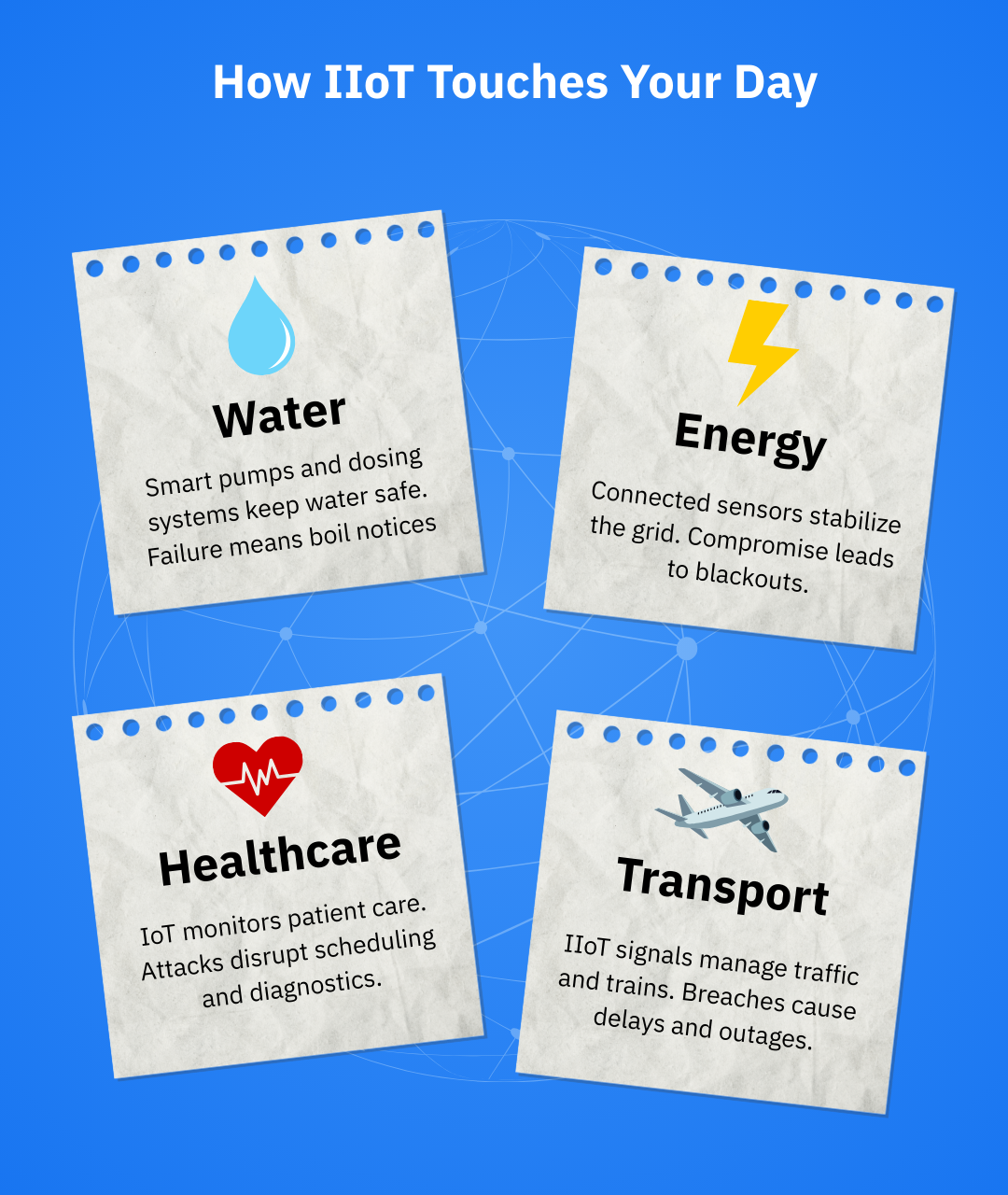
The threat landscape in 2024-2025
Security agencies on both sides of the Atlantic have warned that state-backed groups are infiltrating and stealing data from networks that operate essential services. In a 2024 joint advisory, the US and partners detailed how “Volt Typhoon,” a PRC-linked threat group, favored stealthy “living-off-the-land” techniques to embed in critical infrastructure and potentially reach operational technology (OT) that controls physical processes.
Iran-aligned actors have also targeted industrial controllers. In late 2023, “CyberAv3ngers” compromised PLCs used by multiple US water facilities and others, defacing systems and highlighting how small operators can be hit.
The risk isn’t just theoretical. Cyberattacks against water facilities are rising, with many utilities failing at basic cyber hygiene, says the US EPA. In such a scenario, threat actors could disrupt water treatment, or even alter chemical dosing.
In the EU, ENISA’s 2024 Threat Landscape report flagged threats that could halt services as the top concern, ahead of ransomware and data attacks. That shift is crucial to consumers because “down” can now mean no power, no water, no trains, and no communication.
Why securing IIoT is so difficult
Industrial environments were designed with safety and uptime in mind, and exposure to the public internet was not a solid criterion. The very design of these ecosystems created several challenges, which remain relevant:
- Legacy OT clashes with modern IT: old controllers often lack authentication and encryption, so much so that upon connection, they inherit internet risk
- Complex supply chains: a small vendor or remote maintenance connection can become a weak link
- Visibility gaps: asset inventories are often incomplete; you can’t defend what you don’t know you have
- Patch constraints: you can’t reboot a power grid at noon for a firmware update
To address these challenges, the ISA/IEC 62443 standards implemented layered defenses and secure development practices for industrial automation and control systems (IACS), from governance to technical controls, bridging OT and IT teams.
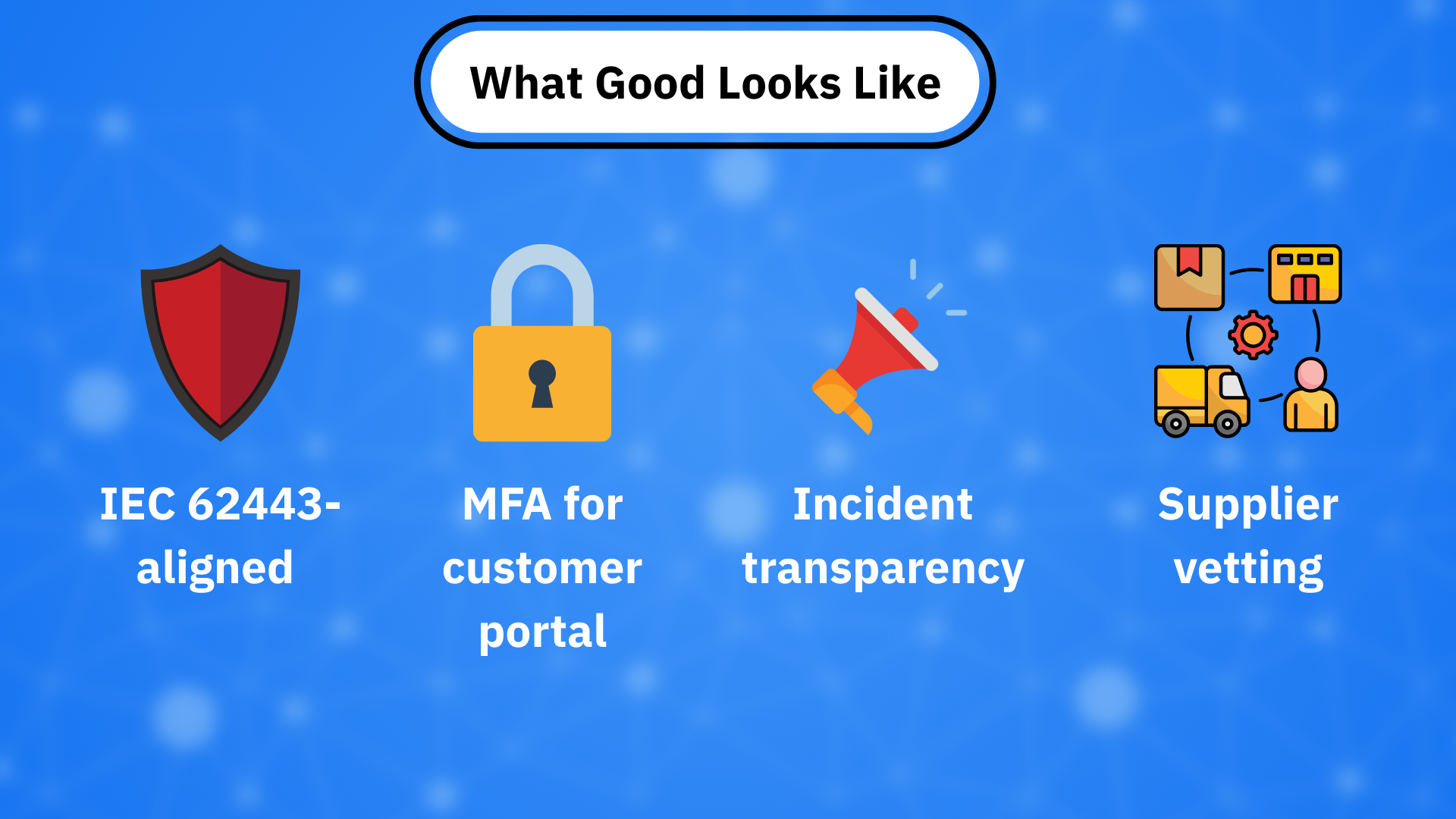
What this means for everyday life
As IIoT runs physical processes, a cyberattack against an IIoT system often has physical outcomes. For instance:
- Water: loss of treatment or unsafe dosing can lead to boil notices and service interruptions
- Energy: substation issues can spiral down into blackouts and equipment damage
- Healthcare: ransomware or OT/IoT disruptions can impact scheduling, diagnostics and care delivery
- Transport: signaling failures slow or halt services, stranding commuters
- Food and agriculture: disruptions in processing and logistics can raise prices and reduce availability of products
For consumers, this means outages, delays, higher costs, and, during crises, a fertile ground for scams such as fake utility reps, bogus expedite fees or phishing around service alerts.
What you can do as a consumer
While you can’t patch a water plant against threat actors from your couch, you can take a few steps to reduce propagated risk to your household and community:
- Learn how your providers contact you: save official communication channels for your local utility and transit agency and remain skeptical of seemingly urgent texts with links or unusual demands during outages
- Treat service alerts like banking alerts: avoid clicking links, don’t give personal data to whoever demands it, and always go to the official site or app you already use instead of following instructions in emails or messages
- Report suspected scams: if you suspect foul play, always alert authorities such as your utility and national CERT, as misinformation thrives during crises
- Prepare small, but think big: keep 72-hour stocks of essentials such as water, non-perishable foods and medication, maintain phone battery packs and plan for alternative heating/cooling whenever possible, and keep a printed list of critical contacts in case networks are down
- Support resilience with your choices: try favoring providers that publish cybersecurity and resilience commitments (many align to IEC 62443 or, in the EU, NIS2 obligations). Ask about multifactor authentication (MFA) for your utility account, outage communication plans and fraud-prevention practices
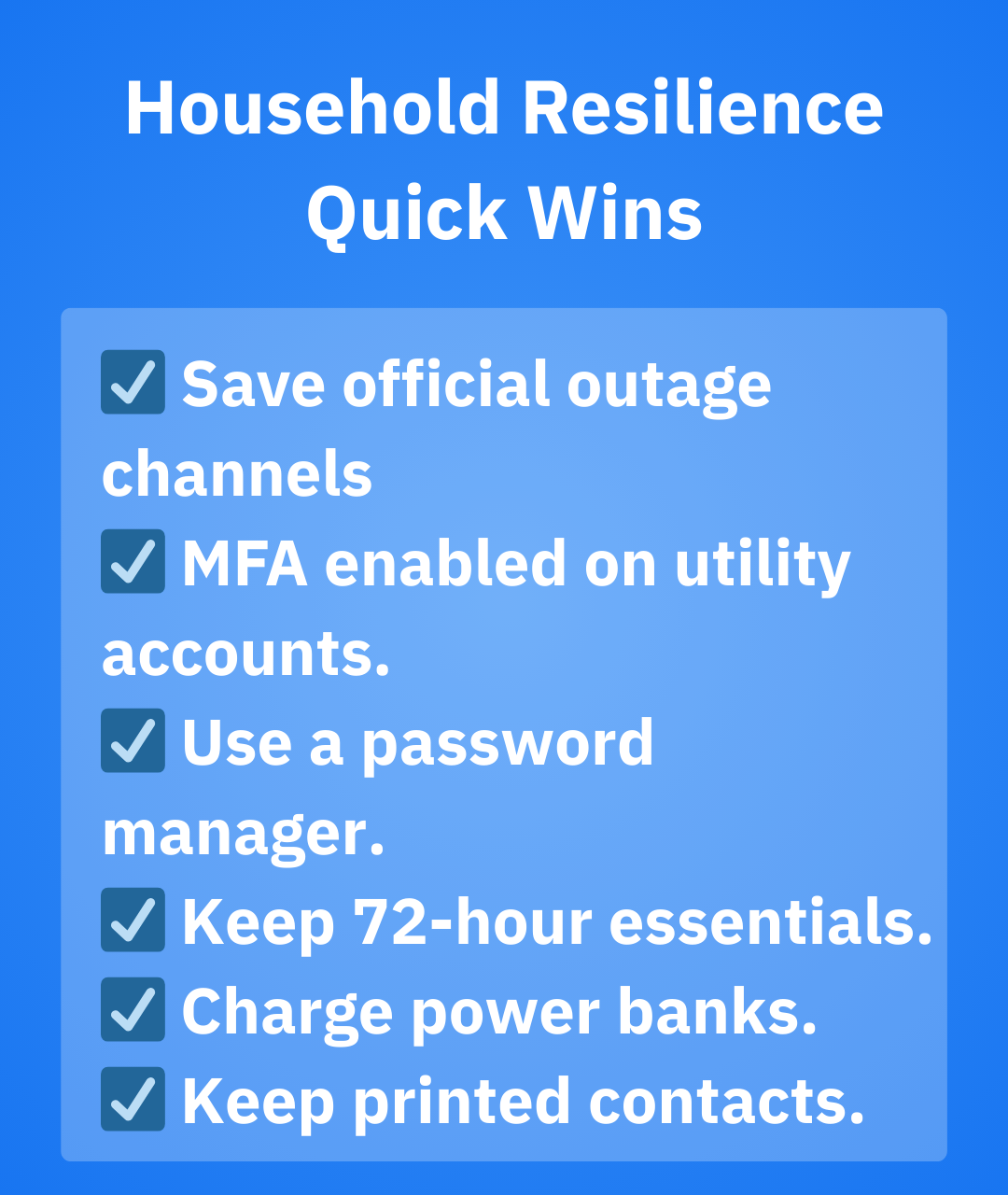
How defenders are raising the bar
Protecting critical infrastructure involves rethinking how industrial systems are designed, regulated and monitored. Defenders are steadily raising the bar to make IIoT environments more resilient against evolving cyberattacks through international standards, policies and regulations, and coordinated threat hunting.
- Standards and segmentation: IEC 62443 promotes defense-in-depth, role-based access and secure product development for industrial vendors and operators
- Regulation and transparency: in the EU, NIS2 expands who must implement risk management, incident reporting and supply-chain security across 18 critical sectors, driving better practices that ultimately benefit citizens. Guidance published in 2025 help translate legal text into actionable controls
- Threat hunting at scale: joint advisories (such as the “Volt Typhoon” US joint advisory) provide indicators and mitigation steps for operators to evict stealthy intrusions before they become outages
- Focus on availability: European reporting emphasizes that keeping services operational is now the prime objective, shaping investment and drills
Conclusion
IIoT is the invisible machinery of modern life that brings efficiency and reliability, as well as new pathways for disruptions if left unprotected. Governments and operators are raising defense efforts through standards like IEC 62443, regulatory pressure through NIS2 and joint threat hunting. Your role is simple but important: keep your household resilient, verify before you click during incidents, and favor providers who treat security and transparency with utmost importance.
tags
Author
Vlad's love for technology and writing created rich soil for his interest in cybersecurity to sprout into a full-on passion. Before becoming a Security Analyst, he covered tech and security topics.
View all postsRight now Top posts
Cybercriminals Use Fake Leonardo DiCaprio Film Torrent to Spread Agent Tesla Malware
December 11, 2025
Genshin Impact Scam Alert: The Most Common Tricks Used Against Players
December 05, 2025
How Kids Get Automatically Added Into WhatsApp Groups with Horrific Imagery Without Consent
November 24, 2025
Scammers Exploit Hype Around Starbucks Bearista Cup to Steal Data and Money, Bitdefender Antispam Lab Warns
November 18, 2025
FOLLOW US ON SOCIAL MEDIA
You might also like
Bookmarks



